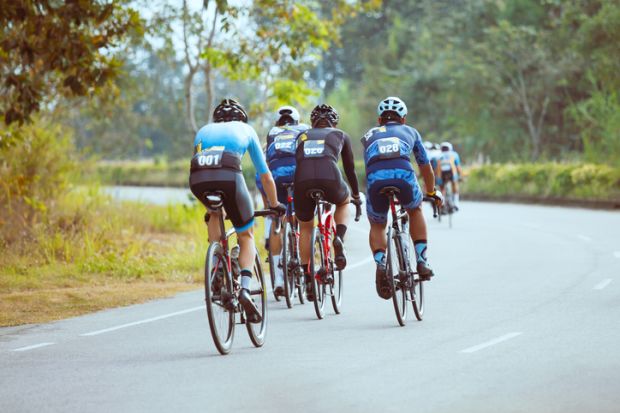China’s rapid progress in catching the US on the number of top researchers could slow eventually simply because of the strong “legacy” effect that established science systems have, it has been suggested.
The observation was made as the latest edition of an annual list of the world’s most cited researchers again showed the gap between the nations shrinking, with China-based scholars now making up 14 per cent of the group.
This is almost double the share of four years ago, according to Clarivate, the publisher of the annual Highly Cited Researchers (HCR) list, while the US has now fallen below a 40 per cent share, with 2,622 researchers.
The latest result now leaves clear water between China and other nations: the UK remains third with a 7.5 per cent share, down 0.5 percentage point on last year, while Australia, with a 5 per cent share, is now fourth after pulling slightly ahead of Germany.
David Pendlebury, senior citation analyst at Clarivate’s Institute for Scientific Information (ISI), said that apart from Australia and a few other exceptions, China “seems to be taking share away from everyone” when it came to highly cited researchers.
This was down to a number of factors, including China’s rapid growth in overall research output, which was now ahead of the US, meaning that its volume of top-cited research and scholars would inevitably increase.
However, Dr Pendlebury pointed out that “having a legacy has persistence” and said there may come a point when it would be difficult for China to take share away from universities in North America and Europe producing the highest quality research.
Displacing such institutions would take “much effort and longer than people would think”, he said.
The trajectory of China’s rise in highly cited researchers likely represented an “S” curve, he added, “where we’re seeing China rising very rapidly in comparison to other countries, not only in their publication output but also in their number of highly cited papers and, consequently then, in their number of highly cited researchers.
“But nothing grows to the sky, and eventually growth will slow. Would we get to parity [between China and the US] within the decade? I don’t know; that would be very challenging. Just because of the legacy…that Europe and North America has.”
In terms of institutions with the most highly cited researchers, who are found by analysing publications that rank in the top 1 per cent by citations for field and publication year in the Web of Science, Harvard University still leads with 214, but only 20 ahead of the Chinese Academy of Sciences. The highest Chinese university is Tsinghua, now in eighth with 58 HCRs.
On Australia’s performance, showing that it produced about 13 highly cited researchers per million people in its population, the highest of any of the leading nations, there may also be questions about whether it can maintain this longer term.
A report last year linked its progress up the list with its increase in international student recruitment, particularly from China, something that is now coming under major pressure because of the closure of its borders during the pandemic.
Jonathan Adams, chief scientist at the ISI, said Australia’s performance in the HCR list over the past few years had been extremely impressive given the size of the economy, but resources were always finite.
“Whether they are plateauing…I wouldn’t be surprised; you can’t go on expanding in an unlimited way. The resources that China is throwing at [research] are vast by comparison,” he said.
“A huge commendation to [Australia] for what they’ve achieved, but I don’t think it would be a criticism at all if that [rise] began to slow down.”
In total, 6,602 researchers from more than 70 countries and regions were recognised in the Highly Cited Researchers list this year: 3,774 in specific fields and 2,828 for cross-field impact. They included 24 Nobel laureates, five of whom were announced this year.
simon.baker@timeshighereducation.com
Top countries/regions in terms of share of Highly Cited Researchers 2021
|
Ranking |
Country/territory |
Number of HCRs |
% share |
Change in % share 2018 to 2021 |
|
1 |
United States |
2,622 |
39.7 |
−3.6 |
|
2 |
China Mainland |
935 |
14.2 |
6.2 |
|
3 |
United Kingdom |
492 |
7.5 |
−1.5 |
|
4 |
Australia |
332 |
5.0 |
1.0 |
|
5 |
Germany |
331 |
5.0 |
−0.9 |
|
6 |
Netherlands |
207 |
3.1 |
0.0 |
|
7 |
Canada |
196 |
3.0 |
0.3 |
|
8 |
France |
146 |
2.2 |
−0.4 |
|
9 |
Spain |
109 |
1.7 |
−0.2 |
|
10 |
Switzerland |
102 |
1.5 |
-0.7 |
Source: Clarivate
Register to continue
Why register?
- Registration is free and only takes a moment
- Once registered, you can read 3 articles a month
- Sign up for our newsletter
Subscribe
Or subscribe for unlimited access to:
- Unlimited access to news, views, insights & reviews
- Digital editions
- Digital access to THE’s university and college rankings analysis
Already registered or a current subscriber? Login









